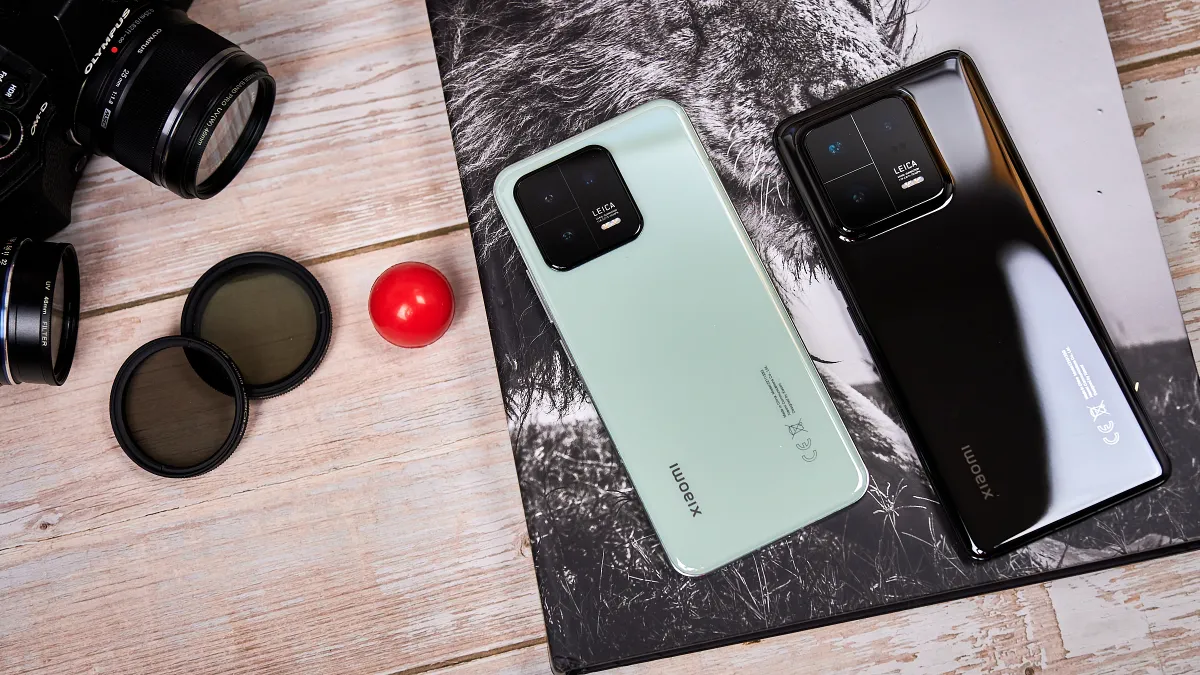I have tried the new Xiaomi Series 13, with the Xiaomi 13 designed for those who prefer compact phones without giving up anything, and the Xiaomi 13 Pro with one of the best photographic equipment of the moment. I will tell you about my experience using two of the best smartphones of the year.
Xiaomi has been trying to remove the stigma of ” cheap mobile manufacturer” for a couple of generations with a turn of its flagship towards the Premium range with Series 11 and Series 12 that opted for quality manufacturing materials and the best hardware of the moment.
With the arrival of the Xiaomi Series 13, the Chinese brand goes a little deeper into this strategy with a pair of mobiles equipped with the most powerful processors on the market, top-level screens, and photographic equipment with the Leica guarantee seal.
The Xiaomi 13 is the base model of the family and is based on a more compact chassis that does not give up anything in terms of performance and comfort of use, while the Xiaomi 13 Pro lives up to its name starting from the same hardware base. , but marking important differences in a photographic section destined to beat the podium for the best photographic mobile of 2023. Arguments are not lacking.
Xiaomi has been restructuring its catalog making it clear that if you want a cheap smartphone you should look for it under the Redmi reference, while the Xiaomi -just dry, without Mi- are now high-end and Premium mobiles that reach the market with an official price of 999.99 euros, while the Xiaomi 13 Pro arrives with a starting price of 1,399.99 euros.
The review of the Xiaomi 13 and 13 Pro, analysis, test, and opinion of Computerhoy:
- Characteristics and technical sheet of the Xiaomi 13 and 13 Pro
- Design and connectivity: two different concepts that share the quality of materials and design
- Screen and sound: excellent brightness and the option to choose between a straight or curved screen
- Performance and software: Snapdragon 8 Gen 2 is once again a guarantee of performance
- Cameras: Leica has made the Xiaomi 13 convincing, but the star is the 13 Pro
- Autonomy: great optimization of consumption in batteries below 5,000 mAh
- Versions, offers, and prices of the Xiaomi 13 and 13 Pro
- Review Is it worth buying the Xiaomi 13 and 13 Pro?
Technical sheet of the Xiaomi 13 and Xiaomi 13 Pro
| Xiaomi 13 | xiaomi 13 Pro | |
|---|---|---|
| Screen | 6.36-inch AMOLED 2,400 x 1,080 pixel resolution | Format 20:9 Dolby Vision 120 Hz refresh rate |
6.73-inch LTPO AMOLED curved screen 3,200 x 1,440 pixel WQHD+ resolution 20:9 format 120 Hz refresh rate Dolby Vision |
| Processor | Snapdragon 8 Gen 2 Adreno 740 |
Snapdragon 8 Gen 2 Adreno 740 |
| RAM and storage | 8 GB and 12 GB 256 GB LPDDR5X at 8533 Mbps UFS 4.0 Not expandable with microSD |
12 GB 256 GB 8533 Mbps LPDDR5X UFS 4.0 Not expandable with microSD |
| main chambers | Main: 50 Mpx f/1.8 Ultra-wide angle: 12 Mpx f/2.2 Telephoto: 10 Mpx f/2.0 |
Main: 50 Mpx f/1.9 Ultra Wide: 50 Mpx f/2.2 Floating Telephoto: 50 Mpx f/2.0 |
| Frontal camera | 32MP f/2.0 | 32MP f/2.0 |
| Battery | 4,500 mAh 67W Fast Charge 67W Turbo Wireless Charging 4.5W Reverse Wireless Charging charger included. |
4,820 mAh Fast Charge 120 W Wireless Charging 50 W Turbo Wireless Charging 4.5 W Reverse Charger included. |
| OS | MIUI 14 Android 13 |
MIUI 14 Android 13 |
| connectivity | 5G WiFi 6 (802.11 axes) Bluetooth 5.3 NFC USB-C 3.2 A-GPS, Glonass, BDS, Galileo |
5G WiFi 7 Bluetooth 5.3 NFC USB-C 3.2 A-GPS, Glonass, BDS, Galileo |
| Dimensions and weight | 152.8 x 71.5 x 7.98mm 189 grams |
162.9 x 74.6 x 8.38mm 229 grams |
| Additional features | Dolby Atmos Stereo Speakers |
Dolby Atmos Stereo Speakers |
| Price | Xiaomi 13 from 999.99 euros | Xiaomi 13 Pro for 1,399.99 euros |
Two different concepts that share the quality of materials and design
Despite sharing the same name, the Xiaomi 13 and its older brother couldn’t be more different in terms of design, not the quality of materials, although on that point they don’t match in finishes either.
On the part of the Xiaomi 13, we find a compact smartphone that I liked the touch it transmits. Xiaomi has forgotten the curves of the previous generation and in this new batch, it is committed to a more monolithic design with straight edges and rounded corners in the purest iPhone style.


Comments are closed.